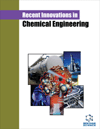
Full text loading...
We use cookies to track usage and preferences.I Understand

Refractory linings of cement rotary kilns are subjected to severe thermomechanical stresses of cranking, ovality, tyre hooping/migration, and uneven thermal distribution. An insistent demand is to discover the significance of spinel, hercynite, galaxite, and chromite in magnesia refractories, as well as their flexibilizing mechanisms.
The objectives are to compare the fracture behavior of magnesia–spinel, –hercynite, -galaxite, and -chromite refractories and to unveil the flexibilizing mechanisms of different spinels.
The wedge-splitting test is carried out to produce various fracture parameters. Their flexibilizing mechanisms are unveiled by performing microstructural observations and analyses.
Various fracture parameters are obtained, including specific fracture energy, brittleness number, characteristic crack length, and thermal-shock resistance parameter. Generally, magnesia–hercynite bricks and magnesia–galaxite bricks have demonstrated the obvious advantages of fracture resistance, which are more flexible than magnesia–spinel bricks and magnesia–chromite bricks.
The flexibility of magnesia–spinel bricks is attributed to microcracks generated from the thermal mismatch between spinel grains and surrounding periclase, which is recognized as the thermal-expansion mismatch mechanism. In magnesia–hercynite and magnesia-galaxite refractories, the active-ion-diffusion mechanism is predominant beyond similar microcracks, to drive the flexibility by the continuous diffusion of Fe2+, Mn2+, and Mg2+ during high-temperature processes. In magnesia–chromite bricks, the pore rims contribute to the flexibility as a silicate-migration mechanism, after silicate envelopes first arise around chromite grains and then vanish into the surrounding magnesia by the suction of capillary force during the burning process.

Article metrics loading...

Full text loading...
References


Data & Media loading...